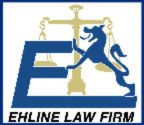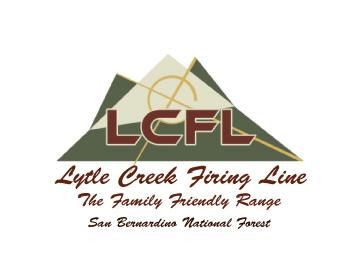Can I Get VA Benefits for Burn Pit Exposure – Everything You Need to Know
Introduction
When you think of veterans, you imagine brave soldiers fighting enemies, using tactics to reveal enemy hideouts, and working together to end terrorism. That’s about right, but there are more dangerous elements that threaten the lives of our courageous soldiers than just enemies.
One such threat is a burn pit. Burn pit exposure has been a heatedly debated topic in the US politics for several years. You’ve probably seen footages of veterans protesting to get disability benefits and probably all the drama that took place in the Congress.
To know the nature of this danger, you have to understand what burn pits are how they have affected veterans over the course of more than three decades.
Understanding the Burn Pits
When the army either seizes a military base from enemies or abandons one of its own, it has to make sure to leave nothing behind. To leave nothing behind, it has to find a way to get rid of everything that makes up a military base.
The items that need to be disposed could be weapons, medical waste, chemicals, human waste, and much more. One way to achieve that goal for the military was to burn all of it. The soldiers would set up a place where they would collect all of the aforementioned items.
After that, they would set the whole thing on fire. This fire would continue to burn for several days, releasing smoke, gas, and fumes in the air. This air filled with toxic smoke and fumes contains is assumed to contain carcinogens and other dangerous gases.
To set acres and acres of land on fire, the military would first use jets to pour fuel on the waste that needs to be burned, contributing more to the release of toxic fumes.
Where Did the US Military Use Burn Pits
The use of burn pits has been common in the last 3 decades of the US military’s history. At first, it was the Gulf War where the military used this method of burning the refuse from military bases.
After the Gulf War, a more frequent use of burn pits took place in the two major wars in Iraq and Afghanistan. The two wars were a result of the 9/11 attacks on the US, resulting in the complete destruction of the Twin Towers.
It can be safely said that the use of burn pits became more common after in the post 9/11 wars and was prominent in the Southwest Asia theater. That’s also when most of the burn pit exposure took place.
Conditions Caused by Burn Pit Exposure
The list of conditions that burn pit exposure can cause is very long. It is important to differentiate between the conditions caused by this exposure and other general symptoms resulting from it.
Some veterans might show symptoms because they breathed in burn pit smoke during their service, but they might not have any serious medical condition.
A veteran exposed to burn pits could show signs of headaches, asthma, bronchitis, heart diseases, pulmonary issues, and various other neurological disturbances. There are many other conditions that could have a link to burn pit exposure.
Other conditions that may arise after a vet returns home can include sleep apnea, respiratory system issues, skin problems, etc.
The PACT Act
After several months of efforts, the Biden Administration was finally able to sign a bill that provided veterans with the disability benefits they deserved. At first, it is important to mention that only 3 conditions were considered presumptive conditions.
After the signing of the PACT Act, nine more presumptive conditions were added to the list. With the passing of this bill, it is expected that more than 3.5 million veterans who were exposed to burn pits will benefit from it.
All the VA disability benefits will be given to the vets over a course of 10 years. The total amount that will be rewarded will be a bit more than $280 billion. It cannot be overlooked here that Biden’s own son was one of the victims of exposure to burn pits, so his strict and vehement stance for the bill was understandable.
The nine new presumptive conditions that the new bill has added are as follows:
- Lung Carcinoid (Atypical and Typical)
- Sarcomatoid Carcinoma of the Lung
- Trachea Adenocarcinoma
- Trachea Squamous Cell Carcinoma
- Larynx Squamous Cell Carcinoma
- Lung Tumor (Salivary Gland-type)
- Trachea Tumors (Salivary Gland-type)
- Adenosquamous Lung Carcinoma
- Lung Large Cell Carcinoma
This means more vets will now be eligible for VA disability compensation due to conditions specifically caused by burn pit exposure.
Veterans Had to Fight for VA Benefits
The passing of the bill was in no way easy or quick. It took years to get this particular issue noticed by those who could do something about. It is awfully shameful to mention here that veterans who served in the military and were exposed to burn pits had to protest to get this right.
While the bill was not supposed to be this controversial, the retrieval of several republicans became the twist in the story as they agreed to pass a similar law a few days ago, but then disagreed with the PACT Act.
However, the suffering vets were going to go to any length to get the VA health care benefits they deserved. To get the much-deserved VA disability compensation, they sat outside the Congress in protest.
The scorching heat from the sun couldn’t stop them from fighting for their disability compensation. It wasn’t surprising to see them take the heat of the sun with ease after they had already taken the toll of open air burn pit and agent orange exposure.
Weak Evidence for Burn Pit Exposure Related Cancer
One of the reasons it took so many years for vets to get benefits approved for their service connected burn pit exposure conditions is the ambiguity of certain details. What exactly was burning in the open air burn pits no one knows because the military does not have a clear record of that.
At the same time, many studies completed in the past only suggested that gases from a burn pit could affect lung functions. However, the occurrence of cancer specifically due to exposure to burn pits was still not clearly found by any study.
However, it cannot be completely ignored that veterans suffering from lung conditions who are also coincidentally exposed to burn pits did not have their lives in danger.
While a direction connection to the exposure and cancer was not found, the National Toxicology Program of the US and WHO’s International Agency for Research on Cancer did confirm that cancer-causing chemicals were present in the smoke and gases release by open air burn pits.
VA Disability Benefits and Burn Pit Exposure
Anyone who has completed military service in the periods stated earlier with any signs of the aforementioned conditions can apply for VA health care compensation.
The benefits you receive for VA disability will be based on the rating you receive from Veterans Affairs. To receive VA disability benefits, you will have to fill out an application and accompany it with certain evidential documents. You can know about the application and other prerequisites on VA’s own website here.
Your disability compensation will be based on a rating that can anywhere from 0% to 100%. The minimum monthly compensation you will get starts at $152.64 when you have a rating of 10 from Veterans Affairs. The maximum monthly benefit you can get is $3,332.06 for a rating of 100.
Burn Pit Related Benefits Denied
It is possible that you had already applied for benefits from Veterans Affairs but the PACT Act was passed during the processing of your application. In that case, you will not have to complete any additional steps. The department of veterans affairs will accept you for the disability compensation you are eligible for.
Another condition that may arise is when you applied for VA benefits in the past but were denied. However, you now have new evidence that proves your condition is related to your military service.
In that case, you will have to file for a supplemental claim. VA provides you with complete details of filing a supplemental claim and in which scenarios you can apply for it.
AHOBPR – The Burn Pits Registry
You don’t have to stay behind if you don’t have any conditions related to burn pit exposure. You can still help the VA and other fellow vets who might face certain conditions in the future. You can do that by participating in the registry, called AHOBPR, the Airborne Hazards and Open Burn Pit Registry.
The first thing you have to know about the burn pit registry is that participating in it will not affect your disability compensation from VA in any way. Furthermore, if you think you will have to apply for VA disability compensation, you can still become a part of the registry as doing so will not affect your compensation or its eligibility.
Despite your military service, you might not show any symptoms or signs of any conditions. You are still encouraged to be a part of the registry irrespective of your condition. You can fill out an optional health evaluation form when answering the registry questions.
Giving Back to Veterans
Veterans have given this country a lot and return, they have only suffered even more by knowing about cancers and health conditions related to military service. Nine rare respiratory cancers being added to presumptive conditions isn’t good news.
It only goes to show what millions of soldiers have gone through due to military operations that seemed harmless on the surface but weren’t. Veterans benefits due to service connected conditions are the rights they have, but we have to do more to give back to these uncrowned kings.
That’s what Michael Ehline is doing through his recent efforts specifically for the veterans.
Paul Ehline Annual Ride for Veterans
Michael Ehline is the son of Paul Ehline, a marine who didn’t care about airborne hazards or toxic exposure to agent orange. As a result, these airborne hazards got the best of him in his later years, which he passed fighting with cancer.
After his departure to the heavens, Michael has been conducting annual rides to honor his father and his bravery. Every year Michael is joined by Leathernecks MCs in completing a motorcycle ride to spread awareness about cancer in veterans and various other health care issues caused due to their military service.
Your Responsibility
While Michael spreads awareness about open air pits, oil well fires, and agent orange exposures causing cancer in veterans, he continues to perform his own duties as a lawyer too. His aggressive representation in motorcycle accident and personal injury cases has made him stand out from the rest.
He cares about you and anyone who might have been involved in an accident. Just like veterans can’t ignore their conditions after serving in the military, you can’t ignore the slightest symptoms after an accident.
If you or someone you know has been in a motorcycle accident or personal injury incident, contact Michael and get free case evaluation.
Resources
General Stuff
Address
Paul Ehline Ehline Memorial Ride
3838 W Carson St.
Torrance, CA 90503
Phone : (310) 622-8719
© paulehlineride.org. All rights reserved.
Donations submitted through donation forms on PaulEhlineRide.Org are tax-deductible to the fullest extent allowed by U.S. and state laws. These will be in U.S. Federal Reserve Notes. Paul Ehline Memorial Ride™ is a U.S. nonprofit, tax-exempt charitable Section 501(c)(19) organization that benefits US Armed Forces veterans under the U.S. Internal Revenue Code. (Tax identification number 85-4040563.)





